How Long Does Laminate Flooring Last?
The lifespan of laminate flooring according to manufacturers is more than 10 years, but can remain looking great for up to 30 years if properly maintained. The lifespan of your laminate floors can also depend on multiple factors.
Increasing the Lifespan of Laminate Flooring
The quality of your laminate is most important to decide how long the floors will last. Not all floors are made equally, so if the flooring is done right with good quality work, you can be sure that the lifespan of your laminates will be longer.
Professional Installation Help Laminate Flooring Last Longer
Correct installation processes also help to determine if your laminate is of top quality. If your floors are installed correctly they will last longer than poorly installed laminate floors. Foot traffic also plays an important role in laminate quality because you can tell when a room is rarely used, it retains quality compared to a room that is used multiple times a day.
Standing Water can Damage Laminate Flooring
Since laminate floors are not waterproof it’s also important to remember that standing water on laminate floors can leave the floor permanently damaged. So keeping the floors clean and dry is essential.
Laminate Flooring Problems and Repairs
Potential issues that may occur but can be avoided with proper care of laminate flooring include: Peaking, Water/Moisture Damage, & Gapping.
What Causes Laminate Flooring Peaking?
Peaking may occur when proper spacing was not planned for during installation. Room temperatures of the laminate flooring area may also cause peaking. Lastly, not providing proper acclimation time for laminate flooring prior to installation could also cause peaking.
Can Peaking be Fixed?
Yes, if acted upon quickly peaking can be corrected with maintenance repair of the installed flooring area. Inadequate space between the flooring edge and the wall can be corrected without damage if acted upon quickly.
What Does Water / Moisture do to Laminate Flooring?
Excessive moisture or exposure to water can cause buckling. Immediate action is needed to avoid potential long-term damage to laminate flooring. The source of moisture needs to be removed as quickly as possible.
What Causes Laminate Flooring Gapping?
Cold room temperature is often the source for laminate flooring gapping. If the temperature drops to low the laminate planks may begin to pull away from each other. To avoid laminate floor gapping maintain reasonable temperatures in the areas where laminate flooring is installed.
Does Gapping Damage Laminate Flooring?
Overtime if this continues to happen repeatedly it could cause damage to the laminate flooring. In most cases the gapping will self-correct as the room temperatures return to normal.
Is Laminate Flooring Bad?
Although easy to clean, a major disadvantage of laminate flooring is the inability to refinish. Deep scratches or grooves cannot be sanded and refinished like solid wood can be. People who want to refinish the flooring will struggle to maintain laminate flooring because laminate floors cannot be refinished properly. The flooring has only one single layer and it will be great as time passes.
Not All Laminate Flooring Looks Like Real Wood
Another disadvantage of laminate flooring is that it doesn’t look as natural as the wooden flooring if you would like to g another disadvantage of laminate flooring is that it doesn’t look as natural as the wooden flooring. If you’re an aesthetic is natural then choose in laminate flooring may be a bad idea.
Low Quality Laminate Flooring is not as Durable
The structure of laminate flooring does not help reduce the natural hardness of the floor. Another huge disadvantage is that laminate flooring is not durable and it cannot be used for a long time. It has short lifespan because of the quality of the material.
Some Laminate Flooring is Made of Dangerous Chemicals
Sometimes we may not even realize that laminate flooring can contain dangerous chemicals. Most of laminate floors have compounds that are dangerous for the environment. These chemical substances can also have volatile reactions with the environment.
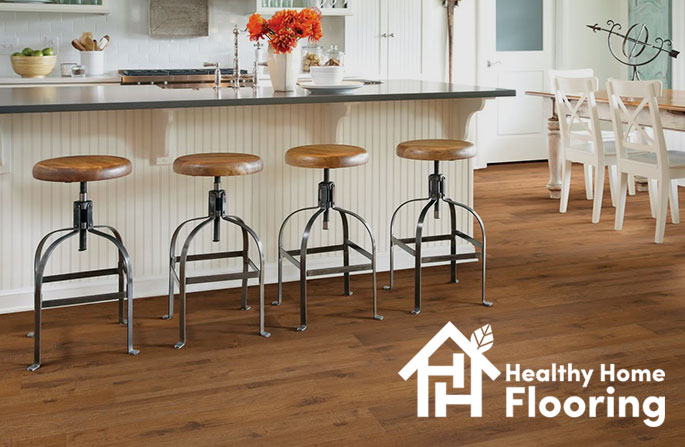
Micro Fiber Material is Great for Cleaning Laminate Flooring
To keep shiny laminate floors a part of your cleaning routine make sure you have ingredients like white vinegar, rubbing alcohol, an empty spray bottle, micro fiber cloth, dish washing detergent, baking soda, and essential oils. A micro fiber mop is extremely useful for cleaning laminate floors and adding shine to it when you mop the right way. Using a steam mop on laminate floors is not a good idea because introducing moisture to laminate can wear down the quality of your laminate floors.
Can I Put Laminate Over Tile?
You can install laminate flooring over a ceramic tile floor providing the tile is in good condition, well attached, and level. The same process is identical to installing a laminate floor on a concrete slab.
Installing Laminate Flooring Over Tile is an Option (in some cases)
It is possible to lay laminate flooring over the tile only when the tile is in decent shape. Cracked tiles all loose tiles will usually spoil your installation and lead to a failed installation job. Using prefinished laminate flooring is recommended when it is being installed over tiles.
Is it Better to Have Carpet or Laminate in Bedrooms?
Most people would agree that carpet is the better choice in bedrooms. Laminate in kitchens, bathrooms, entryways and other living areas of the home is better for people prone to allergies or that have pets.
Carpet is Usually a More Popular Choice than Laminate in Bedrooms
Carpet is the most popular solution for bedroom floors because of the warmth it adds to the room. Since the bedroom is a high traffic area laminate may not be a great choice because it is easily scratched and can wear out after a few years especially when it’s not maintained properly. On the other hand carpets can be a great solution for the bedroom because it is a flexible surface to walk on.
Can You Lay Laminate Over Old Laminate?
This is not recommended. Old laminate flooring should be removes and professional floor prep should be applied if necessary.
Installing New Laminate Flooring Over Old Laminate Flooring
Laying laminate flooring over old laminate is possible but there is product that you may have to spread on the old flooring first so that the old pattern doesn’t wear out under the new one. Make sure that you use a specific type of glue or adhesive that is recommended for gluing laminate tiles.
Is It Hard to Lay Laminate Flooring?
Intermediate skilled DIY’s can install laminate flooring relatively trouble-free. Tools for installation may include a hand or circular saw or flooring cutter. Most laminate flooring comes in planks that snap together. Laminate floor planks have a great tongue-and-groove system which enables home owners to very easily do this themselves without the need of outside assistance.
What Do You Put Under Laminate Flooring?
Underlayment used in installing laminate can be attached to the bottom of the laminate flooring or it comes separately as a roll of polyethylene foam, felt, or cork. There is a supplementary pad that can be installed underneath the laminate so that the overall layout of the flooring is smooth, and has a slightly soft underfoot feeling.
Can I Use Carpet Underlay for Laminate Flooring?
It is not recommended that you use carpet underlayment underneath laminate flooring. If installed as an underlayment for laminate flooring, it will do more harm than good resulting in a headache for the homeowner. The recommended type of underlay for laminate flooring is laminate underlay by itself as it is designed to support the flooring seamlessly.
What is the Warmest Underlay for Laminate Flooring?
Super Gold is the best and thickest product you can use as an insulating laminate underlay. In addition, it also features a plastic vapor barrier protecting against humidity with a noise reduction rating of 22db. The benefit that comes with this thick product is the warmth property, so remember to choose thicker as it will support your laminate flooring well.
Why Won’t My Laminate Floor Click Together?
Common reasons why laminate pieces won’t snap into each other may be because of a warped or flawed piece of laminate, an uneven subfloor, or debris trapped under the flooring or underlayment. Sometimes even the flooring’s grooves may have some debris trapped in it resulting in the floor not clicking together.
Do You Glue Laminate Flooring?
It is not recommended to glue down laminate flooring since it is a floating floor. It is intended to support itself through a locking system that have no connection to the subfloor. Although it may not be necessary, certain types of laminate flooring could use specialised glue to ensure that the flooring stays durable throughout it’s lifetime.
What is the Fake Wood Flooring Called?
Laminate flooring also known as floating wood tile in the United States is a multi-layer synthetic flooring product. It simulates wood with photographic applique layer under a clear protective layer.
Will Laminate Floor Swelling Go Down?
Post gluing down of laminate flooring, the joints of the boards may swell slightly. This is a temporary condition caused by the absorption of water in the glue. This often resolves within 3-4 weeks. The swelling may also be caused by moisture, besides absorption of water from the glue.
What Adds More Value – Tile or Laminate?
Laminate floors are not known for adding much to a home’s resale value as they do not offer the same durability as tile although they are appreciated for their low maintenance and good looks.
Is It Cheaper to Carpet or Laminate Floor?
The expense of installing carpet on surfaces is generally much cheaper than the cost of installing laminate flooring, but remember that laminate flooring is longer-lasting and easier to clean. Laminate flooring is also less likely to suffer weather damage which is great for any homeowner, especially in large homes where maintaining the floors can be difficult.
What Should I Look for When Buying Laminate Flooring?
Assess the visual goals of a room in relation to adjacent rooms and the amount of traffic the room will receive. Board thickness is generally associated with quality and product warranty should also be considered. Quality laminates will always have thick boards, that’s how you know they have great quality. Also remember to ask about warranty and conditions when you purchase laminates for your home floors.
Do You Need to Seal Laminate Flooring?
Sealing the perimeter of the laminate floor is a recommendation made by most manufacturers. This will prevent water from potentially making its way underneath the laminate boards. It isn’t usually necessary to seal the entire flooring since the boards come with a hard finish that is meant to last long. They are also designed to lock together tightly so that water can’t get through them.
Which is Warmer Laminate or Vinyl?
The coldness of a bare floor depends on the temperature of the room. Laminate flooring with a thick underlayment would provide warmth that vinyl typically can’t. There are also underfloor heating systems available. Vinyl floors to offer a warmer and comfortable option when compared to tiles, but laminate flooring can be warmer to the touch compared to vinyl.
Can You put Laminate Flooring in a Bathroom?
Better than solid hardwood, laminate flooring can be installed in a bathroom. Precautions should be made to protect the wood base from moister. A bonus to laminate flooring is the ease of cleaning. When you take precautions to protect the base of the wood from moisture, laminates can last long.
What is Better 8mm or 12mm Laminate?
8mm is a standard thickness and is good quality, affordable, and durable. 12mm is a thicker flooring with a feel similar to walking on hardwood flooring.
Do You Have to Leave a Gap When Laying Laminate Flooring?
Leaving an expansion gap around the perimeter of the floor at least 10-12mm is essential to correctly installing laminate flooring and there are important reasons to doing so. Remember to leave a gap between the panel edges and all walls. The gap doesn’t stay visible as it would usually be hidden by the skirting boards.
Can I Put Kitchen Cabinets on Laminate Flooring?
When installing laminate flooring in kitchens you cannot place cabinets that are meant to be bolted permanently to the floor. Installing these type of cabinets will prevent expansion and contraction due to temperature changes.
How Long Does it Take a Professional to Lay Laminate Flooring?
After 2-3 days, laminate flooring has acclimated to the room environment and can then be installed. Installation by a professional would most likely be less time needed by most DIY homeowners. For professionals, the job can even be done in a day, based on the size of the house and the surface area required to be covered.
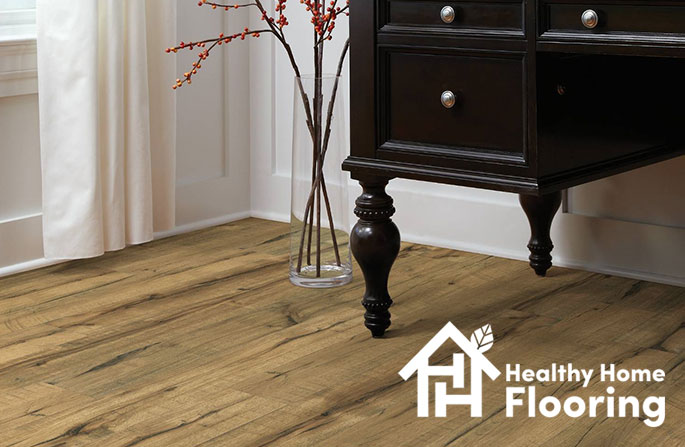
What is Better, Laminate or Vinyl Plank Flooring?
High quality laminate flooring is superior in terms of fading from sunlight exposure than low quality vinyl plank flooring. Quality of the flooring is the determining factor. Similar to vinyl plank, laminate flooring is durable and a good choice for homes with children and pets.
Laminate & Vinyl Plank are Made from Different Materials
Vinyl flooring is synthetic in material. Laminate flooring however is similar to vinyl planks in its look and method for installation. What makes them different is the core which is made from the byproducts of wood. Both of the surfaces are hard and they also have a transparent layer that covers the printed design. Both of these types of flooring can stand up against moisture on the corners of their materials.
Laminate Flooring is not Good for Moisture Areas
One thing that can be different about laminate flooring and vinyl flooring is that laminate flooring can only be installed in places where there is less moisture since it is not waterproof. Vinyl flooring can be installed anywhere around the home.
Can you Mop Laminate Flooring?
When cleaning laminate floors, it is not recommended to use steam cleaners or wet mops. Instead use products designed specifically designed for cleaning laminate flooring otherwise you run the risk of damaging your floors.
It is Dangerous to use Wet Mops with Laminate Flooring
Wet mops and floor steamers are great for cleaning the floors of your home. But water can seep within the seams of laminate flooring and cause the planks to curl. It is dangerous to use wet mops because water may sit in puddles on the floor as you work your way cleaning the room.
Avoid using Hot Steam to Clean Laminate Flooring
The best way to clean laminate floors is by using a very small amount of moisture on the right type of floor cleaner preferably designed for laminate floors. Any mop that can provide the right amount of spray without letting the water sit on the laminate floor for a long time is ideal. Hot steam shouldn’t be used on loosening planks or edges of laminate flooring since that will lead to extensive repairs.
What is Better Laminate or Tile?
Tiles, both porcelain ceramic and non-porcelain tiles are more resistant to staining than laminate flooring. Tiles, when well maintained, can also last longer in the home while laminate will show wear over time.
Laminate Flooring and Tile are Made from Different Materials
Laminate flooring and tile flooring have a completely different style and look as well as a completely different material composition. Laminate flooring uses a few natural materials and is mostly synthetic in nature design to resemble hardwood or stone. Tiles are usually made with ceramic porcelain or slate. Installing tile floors are difficult and would usually require outside expertise.
Laminate Flooring is Fast to Install
The installation for tile flooring usually takes many days to complete. However laminate installation is easier and even homeowners can do it themselves. Installation for laminate flooring usually only takes half a day or a day if it is a bigger house. Ceramic and porcelain tiles however are more cost-effective compared to laminate strips. Laminate flooring and tile flooring offer a wide range of styles.
Laminate Flooring has Different Textures to Choose From
You can choose from different textures and colors imitation for natural stone or hot hardwood and even customize the design of the outer surface. Laminate flooring is more comfortable to walk on because the plants have a thin foam layer giving you a flexible walking surface. We think that both types of flooring make great choices for your home especially in rooms that experience high traffic.
Laminate Flooring is Less Durable than Tile Flooring
Tiles may be more durable in places that experience higher traffic compared to laminate’s as they can be worn down soon. Dial tiles may be more durable in places that experience higher traffic compared to laminates as they can be worn down soon. Tile flooring does not given to moisture damage or water on the surface like laminate flooring does.
Is it Cheaper to Install Tile or Laminate Flooring?
Laminate flooring is a less expensive alternative to installing tile, stone and real wood in your home. Not only is it less expensive to purchase but also less expensive to install.
Laminate Flooring is More Cost Effective per Square Foot
Tiles are cost-effective compared to laminate flooring. Their rates per square foot works out a lot cheaper than the rates for laminates per square foot. However the installation for tiles costs a lot more than the insulation for laminate flooring therefore increasing the cost of having tile flooring a lot more.
Many Home Owners Install Laminate Flooring Themselves
Homeowners are more likely to spend more money installing tile flooring per square foot while installing laminate flooring is not only cheaper but can also be done themselves. So depending on the size of the house installation becomes more labor-intensive and costs increase accordingly.
How Can I Restore the Shine to My Laminate Floor?
Restoring shine on laminate flooring can be accomplished using a specially formulated cleaning product to prevent haziness. You can DYI a store bought cleaner by using equal parts of white vinegar, rubbing alcohol, and water.
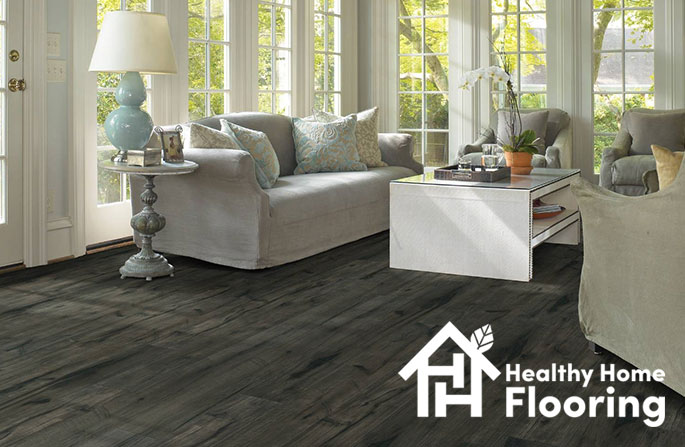
Why Should You Choose Laminate Flooring over Tile Flooring?
Remodeling or redecorating your homes according to your suitability can be a tedious process. Starting from the interiors to the corners that add beauty or the exterior appearance that doesn’t wither over harsh climates, everything needs proper care and attention. Similarly, flooring your home is in no way a simple task. It involves converting the rugged rocky surface into a smooth flooring that walkable and comfortable for the occupants. To choose the best flooring among all that is available out there can be time-consuming.
Keep Up with the Latest Flooring Trends
The flooring industry has grown to bring in many improvements in the past few years. The traditional flooring processes include converting wood, stone, and ceramics into various ways of flooring according to the end user’s needs. Those processes are still prevalent. Some new age ways of flooring have found way into the buildings and construction which we should take note of. This article is also about weighing the differences between one type of modern flooring and traditional flooring.
Choose Modern Flooring Options for your Home
The modern flooring options are laminate flooring, vinyl plank flooring (also has different types), and carpet flooring. For aspiring homeowners or for people who wish to revamp their flooring, choosing the right type of flooring can be a confusing task.
Since most houses that we know today use ceramic tiles as their preferred flooring option, there are quite skeptical about laminate flooring. Laminate flooring is an equivalent competition to the traditional tile flooring. As we progress towards quality and cost-effective forms of living, let’s look into why you should choose laminate flooring over tile for your next home.
What is Laminate Flooring?
Laminate flooring is a type of synthetic flooring fused together by multiple layers to mimic solid hardwood. A befitting replacement for wooden flooring, laminate flooring is in demand by many homeowners due to its ease of installation and affordability. Laminate flooring commonly finds its use in both residential and commercial buildings. Due to its relatively high load bearing capability, homeowners prefer laminate flooring in their homes. With a ride range of designs and patterns to choose from that are almost like wood, laminate flooring adds to the style statement of every home.
How is Tile Flooring Different?
Tile flooring involves the use of materials like ceramics, stone, metal, clay or glass and cut into shapes accordingly depending on the use. Tiles have been in the market for a long time due to its extensive demand and popularity among homeowners. Tiles are widely used for residential purposes in living rooms, bedrooms, and wall fittings in bathrooms etc. Tiles are extremely durable and withstand scratches and strains.
Choosing Laminate Flooring over Tile Flooring
Laminate flooring and tile flooring have been used by many and for many purposes for many decades now. Both in their own ways cater to the requirements of people who choose them. But some factors obvious that hints the preference of laminate flooring over tile.
Factors that Help you Choose Laminate Flooring Over Tile
Installation
For DIY homeowners or installation experts, laminate flooring scores better than tile. As laminate comes in the form of tongue and groove planks, it can be simply installed onto the floor even without adhesives. This ease of installation is what is lacking in tile flooring.
Tile flooring requires interstitial bonding to them together for which we use cement. Besides installation requires expert supervision or in most cases done by expert themselves. Once after tile installation, it requires some minimum time for the adhesive bonds to settle and stick which hinders immediate usage.
Costs
A major barrier for homeowners thinking of affordable living comes through installation costs. Although laminate and tile are affordable and are not the most expensive flooring solutions, laminate is a far more budget friendly option.
Laminate planks cost about $3 – $9 per sq.ft compared to the $5 – $13 for tiles. This, in addition to the hourly installation rates multiplied by the number of working hours is something to consider. Since laminate flooring can be installed on your own, it cancels the need for installation costs. Tiles installation, however, need expert care to properly fix them in place.
Durability
Among other factors, durability is what matters the most. Be it laminate or tile, both of them should withstand all sorts of possible damages can cause harm to the flooring.
Laminates have a clear protective coating over them that scratch and stain resistant. Tiles, on the other hand are equally durable as they stain-proof and less susceptible to scratches.
However, down the lines, tiles are prone to become porous with their bonding which can cause them to crack with minor taps. Also, the same porosity can cause the tiles to blow up making them look out of place. Laminates rarely or never face this problem as they are firmly installed to the ground beneath.
Maintenance
The two important concerns when it comes to maintaining tiles is dusting the grout lines and to bear with fading colors. Grouting is what holds or joins two or more tiles together. This grout lines due to our dust prone environment tend to accumulate dust. This makes the cleaning process difficult. One has to carefully brush them off occasionally to prevent dust clogging. The color of tiles fades due to excessive sunlight or becomes moist in between during heavy rains.
No Maintenance Concerns for Laminates
Laminates don’t pose those maintenance concerns to the homeowners. However, one has to be careful while cleaning laminate floor as wet mopping frequently can damage them. A special type of mop for laminates facilitates their maintenance for the long term.
Appearance
Both laminates and tile flooring have a wide range of styles and patterns to choose from. Laminates mimic the color and texture of natural wood and can be modified according to your interior decoration choices. Tiles are manufactured by replicating the color, form, and texture of stone. One downside is that they are permanent and have to be demolished to install new tiling.
In all fairness, laminate flooring outweighs the feasibility of tile flooring. However, this is not to say that one should not choose tile flooring for their home needs. Ultimately, it depends on the individual’s preference towards what suits best for their ideal home.








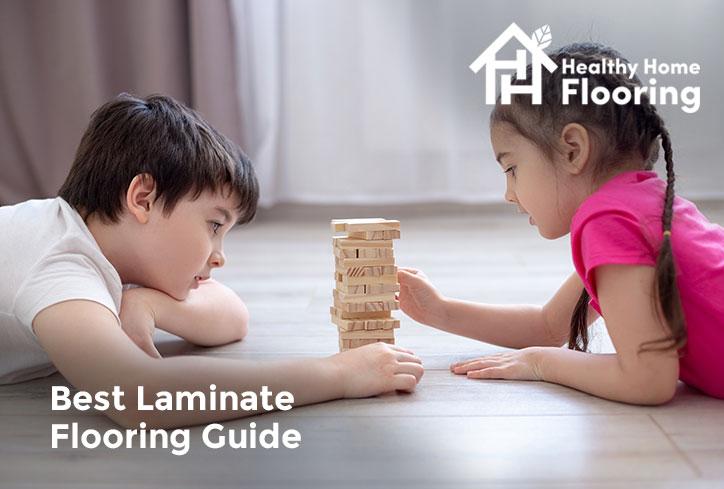
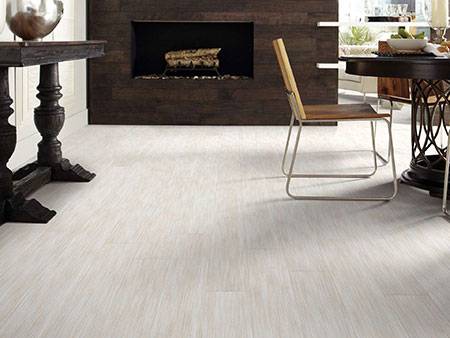
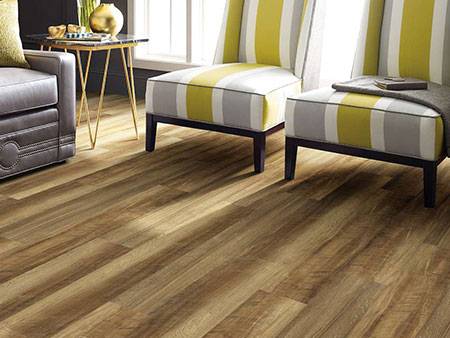
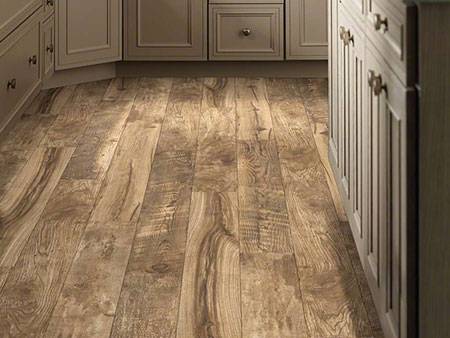
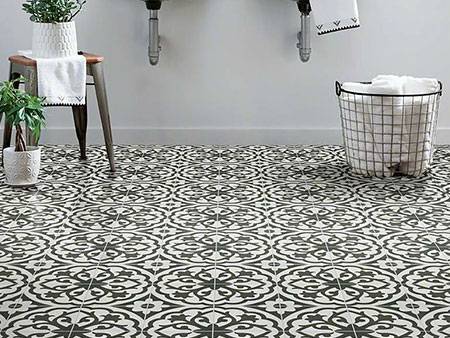
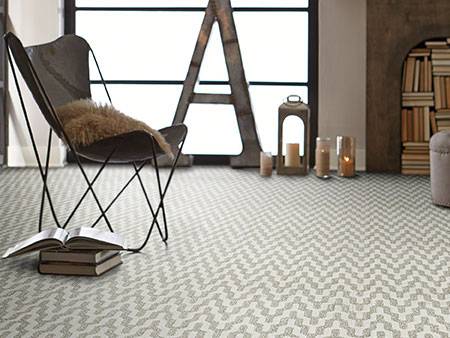
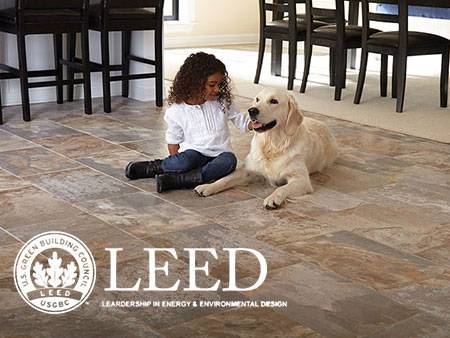

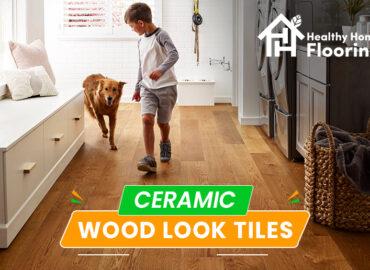
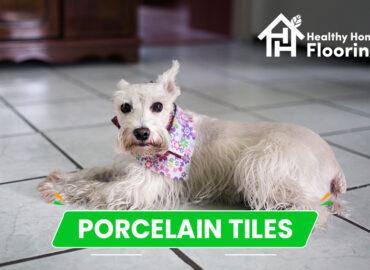

Well, this is an awesome post and written very well. Your point of view is very good.